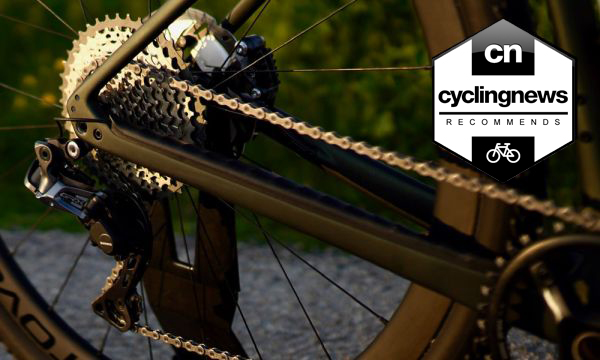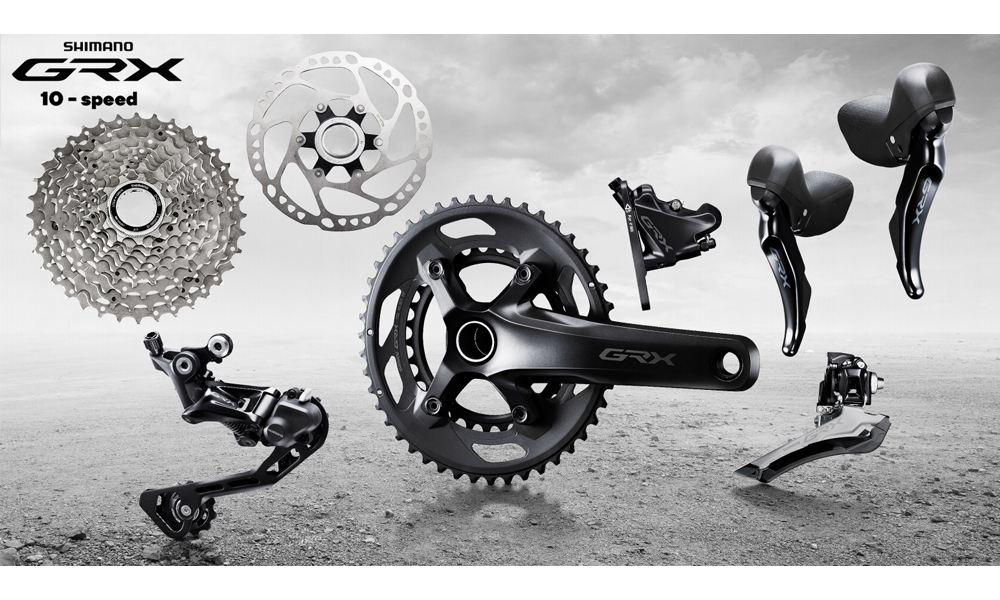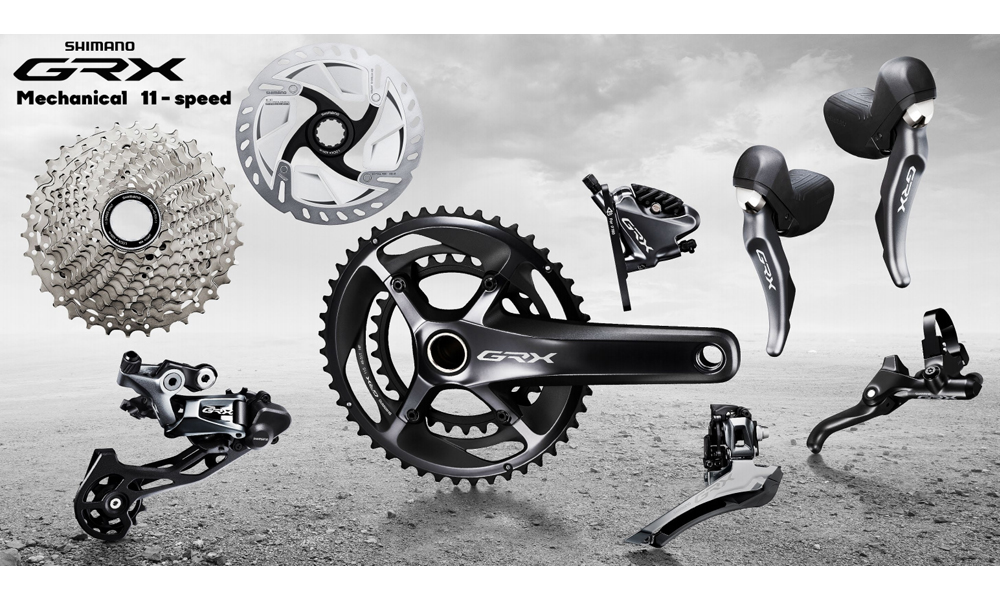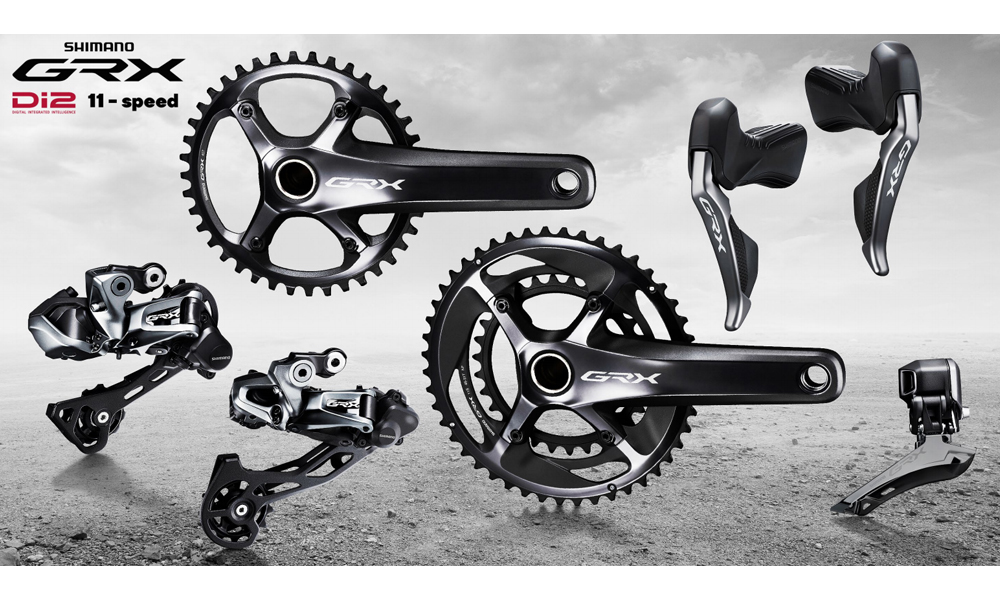Shimano gravel groupsets: the great GRX roundup
With 10-speed, 11-speed and Di2 options, here's everything you need to know about Shimano's gravel groupset range

Shimano might've been late to the party when it came to offering componentry that answered the needs of the ever-growing gravel category but, behind the scenes, Shimano had been working on what it dubs the 'World's first dedicated gravel/adventure component series'.
Shimano's three-tiered gravel groupset range comprises 10-speed mechanical, 11-speed mechanical and 11-speed electronic Di2 groupsets. All share the same GRX moniker and are a common sight bolted to the best gravel bikes.
Scroll down to view Shimano's gravel groupsets, or jump to everything you need to know.
Shimano gravel groupsets

Shimano GRX 10-speed mechanical
Specifications
Reasons to buy
Reasons to avoid
The most budget friendly of Shimano's gravel groupsets is the 10-speed mechanical series. GRX 10-speed predominantly comprises RX-400 series components, but to confuse things a little, the chainset is given the RX-600 moniker. As you'll come to learn, GRX tends to borrow components from elsewhere in Shimano's range, and 10-speed mechanical borrows a bottom bracket from the Tiagra road range and the cassettes and chains originate from its Deore MTB line-up.
Like with the entirety of GRX, the 10-speed mechanical groupset is restricted to hydraulic disc brakes, which are flat-mount in design. The brakes use Shimano's ICE technologies which enable improved heat dissipation on long descents.
There's only one rear derailleur available at this level, which is compatible with cassettes of up to 36 teeth in size. The derailleur is clutched - with a switch - meaning tension can be added to the chain line to prevent dropped chains over rougher terrain. The front derailleur offers a 2.5mm wider chain line compared to a road derailleur, enabling wider tyres - up to 42mm.
GRX 10-speed mechanical is only available as a 2X groupset - meaning there are two chainrings and a front derailleur up front. There's only one chainset to choose from, which features 46/30T chainrings and a Q-factor of 151mm (5mm wider than Dura-Ace). Using Shimano's four-bolt 110 bolt-circle-diameter, it would be possible to change the chainrings for something more suited to your terrain, but bear in mind that your rear derailleur has a maximum front different capacity of 16T.
While the clutched rear mech will make it a better fit for a 1X conversion, bear in mind that the 1X chainsets in the GRX range are 11-speed compatible only.

Shimano GRX 11-speed mechanical
Specifications
Reasons to buy
Reasons to avoid
The mid-level Shimano gravel groupset is an 11-speed mechanical groupset that permits a choice of 1x or 2x setups. Thanks to its 11-speed specification, much of the componentry is interchangeable with the upper-tiered Di2 groupset should a rider wish to prioritise performance or budget in certain areas.
There are two tiers sitting in the 11-speed range. There is a lower-specced RX600 series and the higher-specced RX800 series. The latter of which is a moniker shared with the 11-speed Di2 groupset. The higher series tends to have a higher price, a lower weight, and a greater number of features such as reach-adjust on the brake levers.
The biggest pull of the mid-tier series over the lower-spec 10-speed groupset is the increased choice when it comes to gearing options. While the RX400 series is restricted to 2 x 10 off the shelf with a maximum cassette range of 11-36T, the mid-tier 11-speed option opens up a choice of 1x or 2x chainsets and a cassette range of up to 42T when choosing the long cage RD-RX812 derailleur.

Rear derailleurs are clutched, yet again, and come in two variations - the aforementioned RX-812 long cage, or the short-cage RX810, which will work with cassettes up to 34T in size. Opting for 2x, you can choose from 48/31T or 46/30T chainrings, and those foregoing the front derailleur get a choice of 40 or 42 teeth.
Bottom brackets are borrowed from elsewhere in Shimano's catalogue, with Ultegra and Tiagra both being compatible options, though with all of the GRX range using Hollowtech II cranks, bottom bracket compatibility shouldn't present any issues. Cassettes are also borrowed from elsewhere, with all Shimano cassettes working, assuming it remains within the gear ratio required by the derailleur.
Both the lower-level RX400 and higher-spec RX800-series brake calipers are compatible, and there is also an inline brake lever available - more commonly known as a cross-top lever and popular among the cyclo-cross crowd.

Shimano GRX 11-speed Di2
Specifications
Reasons to buy
Reasons to avoid
The crème de la crème in Shimano's GRX range takes technology from Shimano's range-topping Dura-Ace and XTR ranges with its Di2 shifting. While much of the technology used in GRX Di2 can be found elsewhere in Shimano's range, this top-level gravel groupset cherry-picks features and combines them into a groupset designed for cycling's latest subsection.
The hoods have been redesigned with gravel terrain in mind. There is an exaggerated backward curvature of the hood itself allows riders' hands to lock into place - it really does make a difference - and anti-slip high-grip texture to the rubber. The brake lever's pivot point has been moved up, too, which increases the leverage from that on-the-hoods hand position and thus increases braking power.
Like with Dura-Ace levers, there is also an additional customisable button built into the thumb position of each shifter hood to allow for extra shifting buttons, or the ability to scroll through computer screens (with the addition of D-Fly)
Two of the same chainsets - RX-810-1 and RX-810-2 - are also used in the Di2 groupset, however, the aforementioned RX600 series are compatible. The same applies to the brake calipers.
There is a similar choice when it comes to rear derailleurs, too. With a short-cage option being suitable for 11-30, 11-32 or 11-34 cassettes and the long cage fitting either 11-40 or 11-42.
Should you wish to mix-and-match your groupset specs, Di2 offers increased compatibility, enabling the swapping in/out of an XT rear mech, which opens up the 46T sprocket.
Everything you need to know
1. Do I need a gravel groupset?
As long as your groupset changes gear and your brakes stop you, then you could easily argue that a gravel-specific groupset isn't a necessity. However, a gravel-specific groupset will undoubtedly increase the performance, durability and efficiency of those components, resulting in a more enjoyable ride.
Your mountain bike with knobbly tyres will happily trundle down a tarmac road, but there are better tools for the job.
2. What gears do I need?
This depends. Where do you live? If you live in a flat area, then a smaller spread of gears will suffice. If you live at the bottom of a mountain, you'll probably want to opt for something that will help you ride up steep gradients, rather than having to resort to pushing.
3. ST-R9170-R, MRD-M80500GS, sorry what now?
Shimano's part numbering system might seem daunting at first glance but if you know how to read it, there are clues that will help you choose the best options for your bike. To better understand Shimano's part numbering system, here are a couple of examples from its road and mountain biking range.
- RD-M8050-GS (rear derailleur - M8050 series - long cage)
- ST-R9170-R (STI shifter - R9170 series - Right)
- CS-R8000 (Cassette - R8000 series)
4. Compatibility
Just like how gravel bridges a gap between road cycling and mountain biking, GRX bridges a gap between Shimano's road and mountain groupsets, and in certain regards, GRX is compatible with various sections of Shimano's wider range. Therefore, assuming compatibility, it is possible to mix and match components to create the perfect groupset for your riding needs.
There is a range of considerations to be made here, and these will depend on which components you're looking to combine. Generally, Di2 will be compatible with any component that uses the same number of speeds which, at the time of writing, are predominantly 11-speed.
Rear derailleur capacity is also likely to be considered when choosing cassette sizes. If in doubt, choose a long-cage derailleur, as this will enable wider range cassettes to be fitted.
Get The Leadout Newsletter
The latest race content, interviews, features, reviews and expert buying guides, direct to your inbox!

Josh is Associate Editor of Cyclingnews – leading our content on the best bikes, kit and the latest breaking tech stories from the pro peloton. He has been with us since the summer of 2019 and throughout that time he's covered everything from buyer's guides and deals to the latest tech news and reviews.
On the bike, Josh has been riding and racing for over 15 years. He started out racing cross country in his teens back when 26-inch wheels and triple chainsets were still mainstream, but he found favour in road racing in his early 20s, racing at a local and national level for Somerset-based Team Tor 2000. These days he rides indoors for convenience and fitness, and outdoors for fun on road, gravel, 'cross and cross-country bikes, the latter usually with his two dogs in tow.